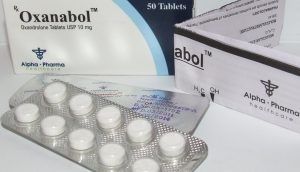Aromatizable and Non-Aromatizable Anabolic Steroids
Aromatization
Ultimately, we come back to the original cause of Estrogen side effects that can rise to the surface with the use of anabolic steroids: aromatization. It is very often a much better idea to practice preventative measures rather than reactive measures. After all, the costs of utilizing an aromatase inhibitor or a SERM throughout a cycle can be one additional expense that adds up in the long run. Additionally, there are negative effects associated with the chronic use of anti-Estrogens, including (but not limited to) bone issues, joint pain/problems, and even the reduction of IGF-1 levels that reduce the prospective gains of a cycle. The more drugs that are thrown into an equation, the greater the complications become.
To effectively practice preventative measures, it is important to understand the nature of the cause and what one can do to control the situation from the beginning without anti-Estrogens. It is important to note, however, that SERMs and AIs should always be kept on-hand throughout an anabolic steroid cycle in the event that estrogenic side effects do become an issue. After all, with underground quality anabolic steroids dominating the market, it can be very difficult to know with absolute certainty that any products might contain the precise dosages desired. Some might be overdosed, some might contain an aromatizable anabolic steroid when the intention was really to obtain a non-aromatizable one, and some products have even been found to be contaminated with Estrogen[1]!
Aromatizable Compounds
Most aromatizable androgens are direct derivatives of Testosterone. For example, Testosterone, Boldenone (Equipoise), Dianabol (Methandrostenolone) and Deca-Durabolin (Nandrolone) are three prime examples of compounds that aromatize. That is to say, all of these compounds (and others, less popular) act as recognized substrates of the aromatase enzyme. Not all aromatization is equal, however. Some exhibit a lower rate of aromatization than others, such as Equipoise (Boldenone), which possesses an aromatization rate of roughly half of Testosterone[2]. Deca-Durabolin is another such compound that has a low rate of aromatization, possessing a rate of about 20% less than Testosterone[3]. Testosterone itself as well as Dianabol both exhibit a moderate level of aromatization[4].
Non-Aromatizable Compounds
There are numerous compounds that are completely unaffected by the aromatase enzyme, as their modifications make them undetectable to the aromatase enzyme as proper substrates. Some of these compounds, such as Masteron, even have anti-estrogenic activity[5] [6]. The fact of the matter is that the majority of these anabolic steroids are derivatives of Dihydrotestosterone, which in and of itself acts as a natural anti-Estrogen in the body and is not recognized by the aromatase enzyme as a proper substrate. The following compounds are not aromatized into Estrogen at any dose: Anadrol (Oxymetholone), Anavar (Oxandrolone), Winstrol (Stanozolol), Masteron (Drostanolone), Primobolan (Methenolone), Trenbolone, and Turinabol (4-chlorodehydromethyltestosterone). Anadrol, however, is a big exception to this list. All readers must be aware that although Anadrol is non-aromatizable and is a DHT-derivative, it is notorious for imposing some of the highest estrogenic effects on its users through currently unknown pathways (although it is strongly hypothesized that it or its metabolites acts as an Estrogen itself in various tissues). Trenbolone is not a DHT-derivative, but due to its unique chemical structure and modification is completely unable to aromatize.

Oxanabol (Oxandrolone) 10mg Alpha Pharma
Preventative Measure: TRT Dose
For those individuals sensitive to aromatization and/or Estrogenic effects, it may be a wise idea to steer clear completely of any aromtizable compounds. However, it is a prime important rule that Testosterone be an essential inclusion in every single cycle for many important reasons. However, there is no necessity to run it at a supraphysiological bodybuilding dose. At higher and higher doses above normal physiological levels, the aromatization rate increases significantly. The solution is therefore to merely utilize Testosterone at TRT (Testosterone Replacement Therapy) dosages, which normally hover in the range of 100mg per week, and medical protocols call for 250mg once every four weeks. In using such a strategy, an individual who wishes to avoid any skyrocketing levels of Estrogen during an anabolic steroid cycle can utilize Testosterone at the previously mentioned dosage whilst running higher bodybuilding range dosages of other non-aromatizing compounds. Effectively, aromatization will be kept to a minimum and the user can enjoy a cycle that brings with it lean gains with little risk of estrogenic side effects, and a low requirement to utilize anti-Estrogens throughout the cycle unless absolutely required.
Medical References:
[1] Poison In A Package. Josh Kovner. The Hartford Courant, November 2005
[2] Gual C, Morato T, Hayano M, Gut M, and Dorfman R. Biosynthesis of Estrogens. Endocrinology 71 (1962):920-25.
[3] Gual C, Morato T, Hayano M, Gut M, and Dorfman R. Biosynthesis of Estrogens. Endocrinology 71 (1962):920-25.
[4] Kruskemper, H L, Anabolic Steroids, Academic Press, New York, 1968
[5] Eur J Cancer Clin Oncol. 1983 Sep;19(9):1231-7.
[6] Cancer Res. 1982 Nov;42(11):4408-12.




